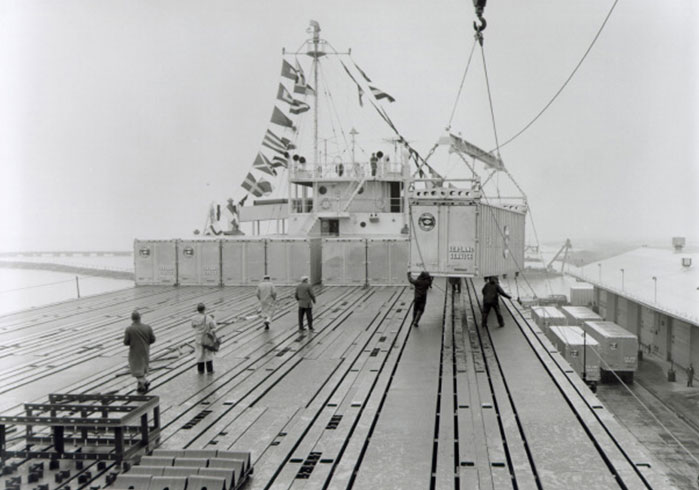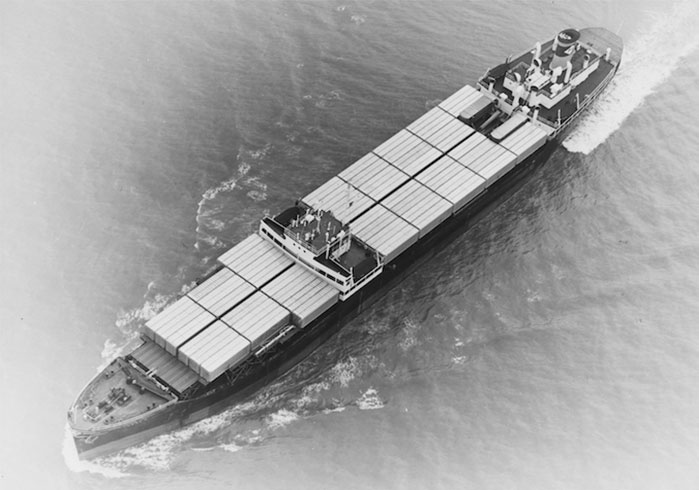Container shipping is one of the best ways to ship freight across the ocean. The advent of containerization brought about a significant move forward for the Marine sector, which allowed it to reach heights that had never before been seen. But the different types of container units available for shipping cargo is a relatively recent development and one that uniquely gained popularity.
The evolution of container ships
The development of container ships dates back to the 20th century. It was at this time that a US-based businessman by the name of Malcolm McLean created cargo containers in an attempt to simplify the process of shipping cargo across the ocean. At the time, this process was incredibly drawn-out and inefficient. The lengthy process meant that freight had to be suitably separated or dismantled before it could be put on a ship. In effect, this said that labor was wasted at multiple points throughout the process of shipping, starting with the initial dismantling of the cargo and later the final assembly of the shipment. Large numbers of freight had to be subdivided because of technical requirements, and there was almost no level of standard for the process.
Aerial picture of the Ideal X fully loaded with containers
This man circumvented the issue by modifying an oil tanker vessel from World War II, the Ideal X. Using the basic structure of that vessel, these original cargo containers were altered and were essentially truck carts without the wheels. This novel initiative required the modified truck carts to be sealed with cargo and then successfully put on shipping vessels so they could be transported from one place to another.
The contraption proved incredibly successful and from that moment onward, changed the way people ship cargo, bulk or otherwise.
This level of containerization meant that the cost for moving cargo was reduced drastically because unwanted processes that were part of shipping requirements previously were eliminated. Transporters could now utilize economies of scale because a large amount of cargo could be easily transported. This meant that the channels which could be navigated by ships were now used for international freight. As the use of cargo shipping began to spread, it brought with it a subsequent development of harbor facilities and ports, a significant number of them to accommodate this giant burst in demand.
Shipping containers also brought about the maritime organizations that set forth rules and regulations for the sizes and the methods used to ship internationally. This led directly to a common platform used by all shipping containers and the subsequent development of the international standardizing Authority. This Authority established that containers had to be 20 feet long, which eventually became known as the twenty-foot equivalent units or TEU’s. They also stated that containers could be forty feet long, which became known as Forty Foot equivalent units or FEU’s. Some people call them two TEU’s because they are effectively two of the smaller size containers.
Negative consequences of containerization
While containerization was indeed a breakthrough for the global shipping industry, the adverse effects that were brought about primarily affect shippers. The labor force used for dismantling and for assembly line operations before the advent of cargo containers was phased out due to redundancy. Beyond that, motorized operational links reduced the requirement for the labor force involved in loading and unloading the freight. Eventually, those engaged in operations at different ports and harbor facilities, skilled laborers, and semi-skilled laborers alike were negatively impacted.
How this affects shippers
In spite of this diminished demand for unskilled labor and semi-skilled labor, the development of containers for the shipping industry made it significantly easier for shipping companies to, again, benefit from that economy of scale. Companies today can ship large quantities from one location to another, which opens up the door to manufacturing in off-site factories in other countries where labor might be cheaper or more specifically skilled. It also brings with it the opportunity for shippers to utilize warehouses throughout the world so that goods can be shipped quickly to different customers, not just those who are local with those who are international.
The cost of shipping is now reduced compared to what it was before containers. No longer do shippers have to shoulder the financial burden of paying for unskilled labor to dismantle and subsequently reassemble their cargo at the first and final port. As more shippers are involved in the shipping process, with supply and demand fluctuating in favor of shippers, the overall cost for shipping goods is reduced as well. Companies are not forced to, for example, fill an entire 20-foot container but can share it with other shippers who help shoulder the cost so companies can focus on shipping only the goods they need to ship when they need them.
Finally, with more ports and harbors open and actively accepting shipments from around the world, shippers can move goods from one place to another faster. There are more people engaged in the process, more countries who are ready to be a part of the shipping industry on a global scale and thus provide regular ports throughout shipping lanes. This means more opportunity for ports, more opportunity for cheaper costs, and specific shipments when and where they are needed rather than loads that are forced to take circuitous routes because no other option exists. Companies can share all of these benefits with their customers, as well.
Wrapping Up
Over the last 50 years, having shipping containers introduced into mainstream operations for ocean-based freight has embodied an advancement that has indeed expanded the proportions of cargo shipping on a global scale. This introduction has also helped newer shipping companies and countries to get involved in the process. As containerized operations have increased alongside technological developments, cargo shipping as it stands today would not be possible without containers.


 Aerial picture of the Ideal X fully loaded with containers
Aerial picture of the Ideal X fully loaded with containers


7 Comments on “The History of Containerization and its Impact on the Shipping Industry”
Good for general public starters, very brief and simple for transport professionals.
Very educative and precise to the point. Important for us maritime resource persons.
Very well explained. I gain a lot as Maritime resource person. Keep it up.
Currently, more goods are shipped around the world in containers. Explain why this seems to be the phenomenon today.
Hi David – Actually a lot of factors could be playing their part in this, the Internet has brought globalization, communication and transactions between countries are so much easier nowadays, low freight costs, and so on. Thanks for reading us.
The efficiency of containerized shipping was recognized in the 1950’s, but strong opposition from the Longshoreman’s Union prevented it’s implementation for many years.
Your tutorial was very educative especially for those of us in the logistics and transportation industry .